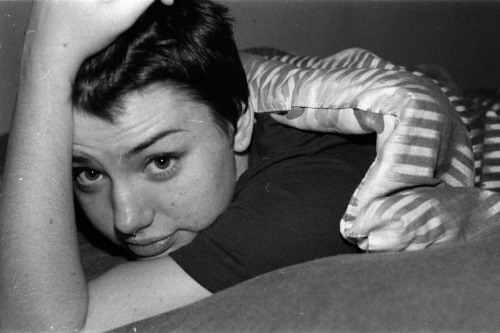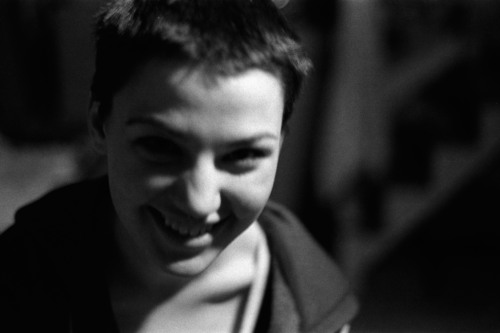grapejohnson
Well-known
I was given two boxes of film as a freebie after doing a photo shoot for the school paper at a local thrift store. This film expired in 1970. The Tri-X is a 20 roll at 400, and the Plus-X is a 36 rated at 125. Considering the cosmetic condition of the boxes, this film seems to have been stored in pretty darn good condition, although there's no way to tell if it was in a hot room or not. I've heard a rule of thumb that film loses a stop for each decade it sits around. I've shot some expired color Kodak from the 90s and it seems to hold true. Does anyone have suggestions? Should I bracket a few test shots and snip them off the roll, or should I shoot it a few stops slower and use stand development in Rodinal?
Chriscrawfordphoto
Real Men Shoot Film.
I'd put them on a shelf as a historical display/decoration. They're not likely any good anymore, and film is so cheap there's no reason to use this old stuff. I've got a couple old Efke rolls from the 1970s on my camera shelf, I think old stuff is cool, so I won't shoot them.
grapejohnson
Well-known
I'd put them on a shelf as a historical display/decoration. They're not likely any good anymore, and film is so cheap there's no reason to use this old stuff. I've got a couple old Efke rolls from the 1970s on my camera shelf, I think old stuff is cool, so I won't shoot them.
I was thinking the same, but my curiosity got the best of me and I opened the Tri-X. They gave so much more information back then with film! I thought Ilford was generous for printing dev times in their packaging, but I now understand why Bruce Gilden said in an interview that "I learned about photography from the boxes of film," because they gave so much other info.
steveniphoto
Well-known
you can expose at 50 and take a chance.. thats 3 stop overexposure so it might ok.... maybe haha. 1970 is pretty old man.
John Roberts
Member
I have recently processed plus-x that expired 1976 and although resulting negs were heavily fogged still produced reasonable prints (wet printing). I rated it at 50asa and developed in D23.
Don't know what they would scan like and I would not use extremely outdated film for important work but would certainly play around with it.
Regards,
John
Don't know what they would scan like and I would not use extremely outdated film for important work but would certainly play around with it.
Regards,
John
Fabio Ruffet
Fabio
or list it on ebay for £9999.99 and see what happens : )
lynnb
Mentor
I recently shot a roll of Panatomic X that I bought in about 1974. It was fine.
sepiareverb
genius and moron
Panatomic-X and Verichrome have good keeping properties, but Plus-X would absolutely not be fine IME, with a fair bit of fog. I'd expect Tri-X to be the same.
I've been shooting some Verichrome 126 film from 1988 on this current project. Barely any fog, and good contrast.
If you do try shooting it I've learned that HC-110b at 66°F using the times from the data sheet (or box in your case) will keep fog to a minimum. HC-110 seems to minimize fog the most.
I've been shooting some Verichrome 126 film from 1988 on this current project. Barely any fog, and good contrast.
If you do try shooting it I've learned that HC-110b at 66°F using the times from the data sheet (or box in your case) will keep fog to a minimum. HC-110 seems to minimize fog the most.
smk
Established
I exposed an E4 1977 film last year and developed it in Rodinal stand development. Here it is:
http://www.flickr.com/photos/30227240@N04/5504523608/in/set-72157626211843126
The film will not behave in the same manner it was supposed to, but you can be creative and something may come out.
S.
http://www.flickr.com/photos/30227240@N04/5504523608/in/set-72157626211843126
The film will not behave in the same manner it was supposed to, but you can be creative and something may come out.
S.
rjbuzzclick
Well-known
I've shot Verichrome Pan from 1969 at 25 and it came out well when developed at the normal ASA 125 times:
http://www.flickr.com/photos/rjbuzzclick/6615723885/
http://www.flickr.com/photos/rjbuzzclick/6615724365/
I have also shot some old (date unknown) Plus-X in 4x5 that came out horribly when shot at ASA 12.
I think it's fun to shoot really old film as long as you go in with the understanding that it may not work at all. I did save the backing paper, spool, foil, and box.
http://www.flickr.com/photos/rjbuzzclick/6615723885/
http://www.flickr.com/photos/rjbuzzclick/6615724365/
I have also shot some old (date unknown) Plus-X in 4x5 that came out horribly when shot at ASA 12.
I think it's fun to shoot really old film as long as you go in with the understanding that it may not work at all. I did save the backing paper, spool, foil, and box.
siracusa
Well-known
As others have said, Tri-X and Plus-X of that vintage will almost certainly be extremely fogged. If you do use it, rate the film at ISO 50, or even 25, overexpose as much as you like. DDX may be worth a try as a developer, and get your hands on an anti-fogging agent. But really, I'd just keep it and shoot some regular film.
Chriscrawfordphoto
Real Men Shoot Film.
I was thinking the same, but my curiosity got the best of me and I opened the Tri-X. They gave so much more information back then with film! I thought Ilford was generous for printing dev times in their packaging, but I now understand why Bruce Gilden said in an interview that "I learned about photography from the boxes of film," because they gave so much other info.
Kodak used to print developing times and even exposure guides in their boxes when I was younger, which wasn't that long ago. I think its unfortunate that they do not do that anymore.
sepiareverb
genius and moron
I did save the backing paper
I've been keeping the beautiful backing paper from this Verichrome 126. I see some Etsy bookmarks in my future???
znapper
Well-known
I would definitely shoot some of each, why not?
Just be careful about what EI you shoot them at though, probably demands a bit of research =)
Just be careful about what EI you shoot them at though, probably demands a bit of research =)
Arthur
Established
Here's an idea. The Contax 11a an unusual feature; in contrast to most, if not all, 35mm RFs and SLRs the film take-up spool is not fixed in place, i.e. it is removable. You can use an empty, properly configured, light-tight cassette as the take up spool. These empty 35mm cassettes are widely available and commonly used for bulk loading film. So, a Contax with this feature would enable you to expose and develop a small portion of the old film. You could then decide what you wanted to do with the remainder. Of course, you would need a Contax with this feature. Unfortunately, I don't know if this feature is available on all pre-war and all post-war Contaxes. However, it may be a feature of (all) Kievs as well.
Photo_Smith
Well-known
I think it depends on storage, I've used Tri-x from 1962-3 and it came out like it was new, but it is not a given that all emulsions will be fine-there is massive variation.
Low fog developers are a must the aforementioned HC110b and Rodinal are excellent in that regard.
Low fog developers are a must the aforementioned HC110b and Rodinal are excellent in that regard.
grapejohnson
Well-known
finally developed it
finally developed it
Shot it at ISO 50, developed in D76 for 7 minutes.
Not bad!!!



If you think modern Tri-x is curly, you have no idea how curled this was. It was a real pain in the ass trying to get this on my scanner tray.
finally developed it
Shot it at ISO 50, developed in D76 for 7 minutes.
Not bad!!!



If you think modern Tri-x is curly, you have no idea how curled this was. It was a real pain in the ass trying to get this on my scanner tray.
x-ray
Mentor
I started my shooting tri-x in 63 in sheet and roll. It was my standard film at the time. Plus- x was never my favorite though. At the time I used D-76 and got some great results. Tri-x was a different film in those days and went through a major reformulation about seven or eight years ago. Until that time I loved the film and now it doesn't respond to development like the old emulsion. It seems to have evolved since the revision but IMO has different characteristics than the original Tri-x.
Share:
-
This site uses cookies to help personalise content, tailor your experience and to keep you logged in if you register.
By continuing to use this site, you are consenting to our use of cookies.

